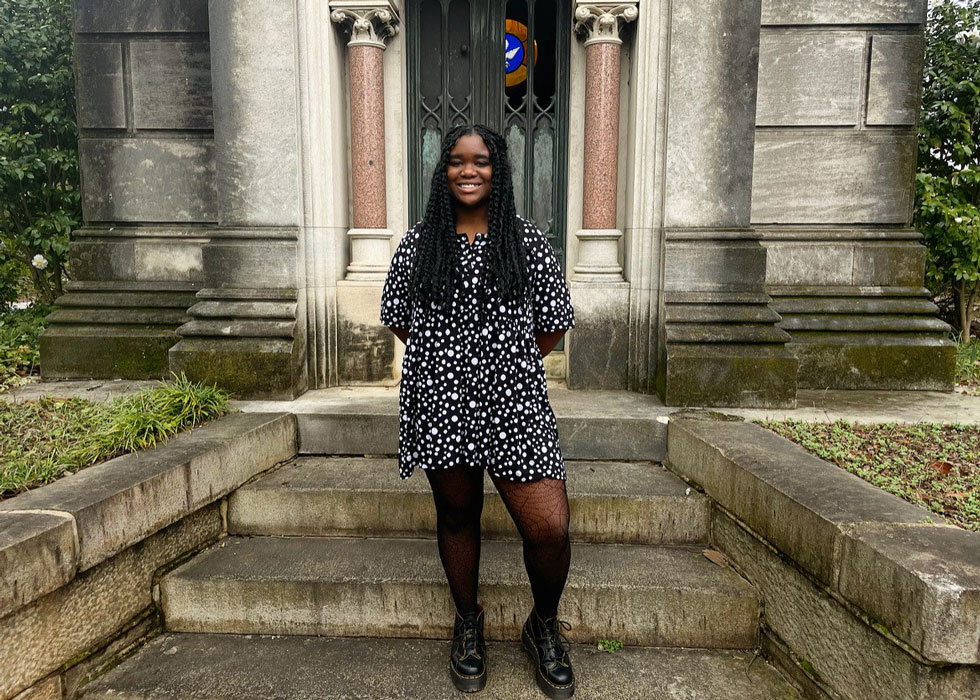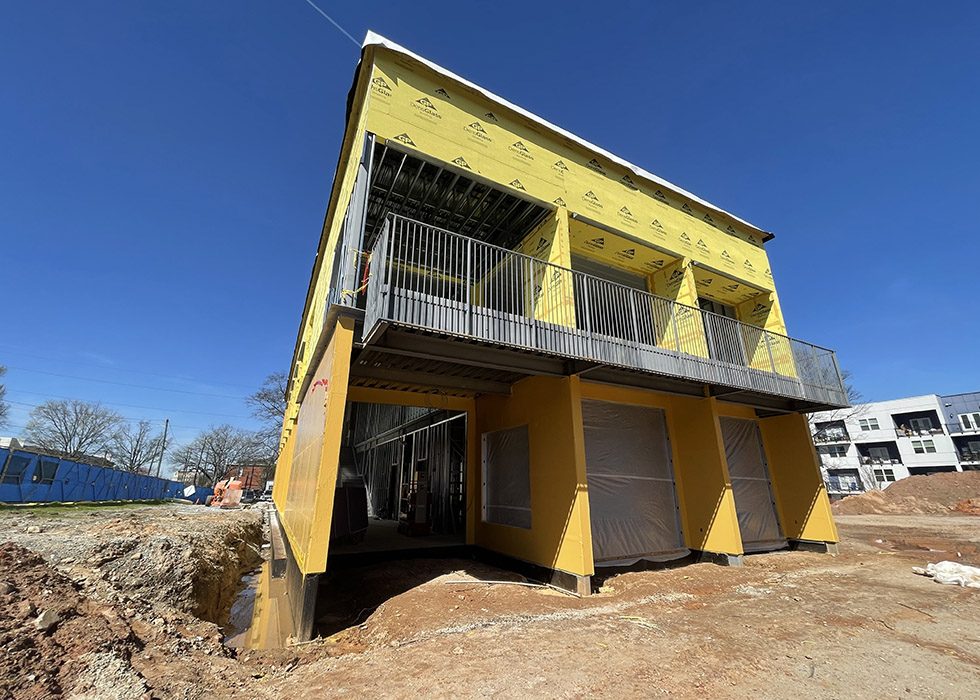
Meet Taylor Roberts, HOF Programming Intern
Meet Taylor Roberts, one of Historic Oakland Foundation’s spring programming interns. She’s a senior at Oglethorpe University, where she currently serves as the president of the student body and the student representative on the DEI Taskforce. Her major field of study is art history, with a minor in nonprofit management. Along with her internship at Oakland, Taylor has experience working at several other museums and historic sites, including the High Museum of Art, the Oglethorpe University Museum of Art, and the Adler Planetarium. Here, Taylor shares her thoughts on interning with HOF.
Oakland Cemetery is my favorite place in Atlanta. To some, it may be perplexing that a 21-year-old college student enjoys spending her time in the cemetery, but if you see Oakland the way I do, you’d understand it’s a natural fit.
I’ve been working at museums and historical institutions since I was 14 years old. It all began the summer I volunteered at the Lincoln Park Zoo and the Adler Planetarium as a summer camp volunteer in my hometown of Chicago, IL. In those positions, I was exposed to the educational freedom and innovation an institution can prompt in young people. I saw this both within the students that I facilitated and taught and within myself as I began to engage with the institutions’ content in a new way.
Starting college, I envisioned a museum career for myself, but I didn’t know many of the specifics. What did it take academically to be a museum professional? Through volunteering and serving as a member of the Oglethorpe University Museum of Art Advisory Board, I found my passion for art history in the museum’s vast collection of Asian antiquities and American landscape works. What stood out to me, though, was that the Oglethorpe University Museum of Art didn’t have a single work by an African American artist.
Using my acquisition experience as a Mellon Curatorial Fellow at the High Museum of Art and funding from Oglethorpe’s Student Government Association, I proposed the acquisition of a work by a local Black artist. At this moment I realized my true purpose and passion: to decolonize museum and institutional spaces and make an arts and history education more accessible to minority populations.
I chose to intern at Historic Oakland Foundation because Oakland is the living history of Atlanta, epitomizing the good, the bad, and the downright ugly. As Atlanta’s oldest public park and only garden cemetery, Oakland’s dynamic setting allows for a reflection on the history of its residents while encouraging visitors to make new memories for themselves. On many occasions, I’ve found myself at Oakland for a socially-distanced picnic, a quiet stroll, or to take prime Instagram-quality pictures. Though I enjoy my casual time at the cemetery, I’m always reminded of its greater hold on history.
Oakland Cemetery is one of the greatest indicators of the Black experience in Atlanta. On my visits to its historic African American Burial Grounds, I marvel at the headstones of Black trailblazers and admire their tenacity, fearlessness, and drive to improve their world and mine. I also remember the anti-blackness they endured and that their segregated burial is yet another indicator of the world’s regard for them at the time. Then there are those we can’t remember, whose burial markers and legacies are lost to time and possibly consigned to oblivion. I work at Historic Oakland Foundation and dedicate my life to educating minority populations for them, illuminating the significant lives of the past and building an equitable future for generations to come.



